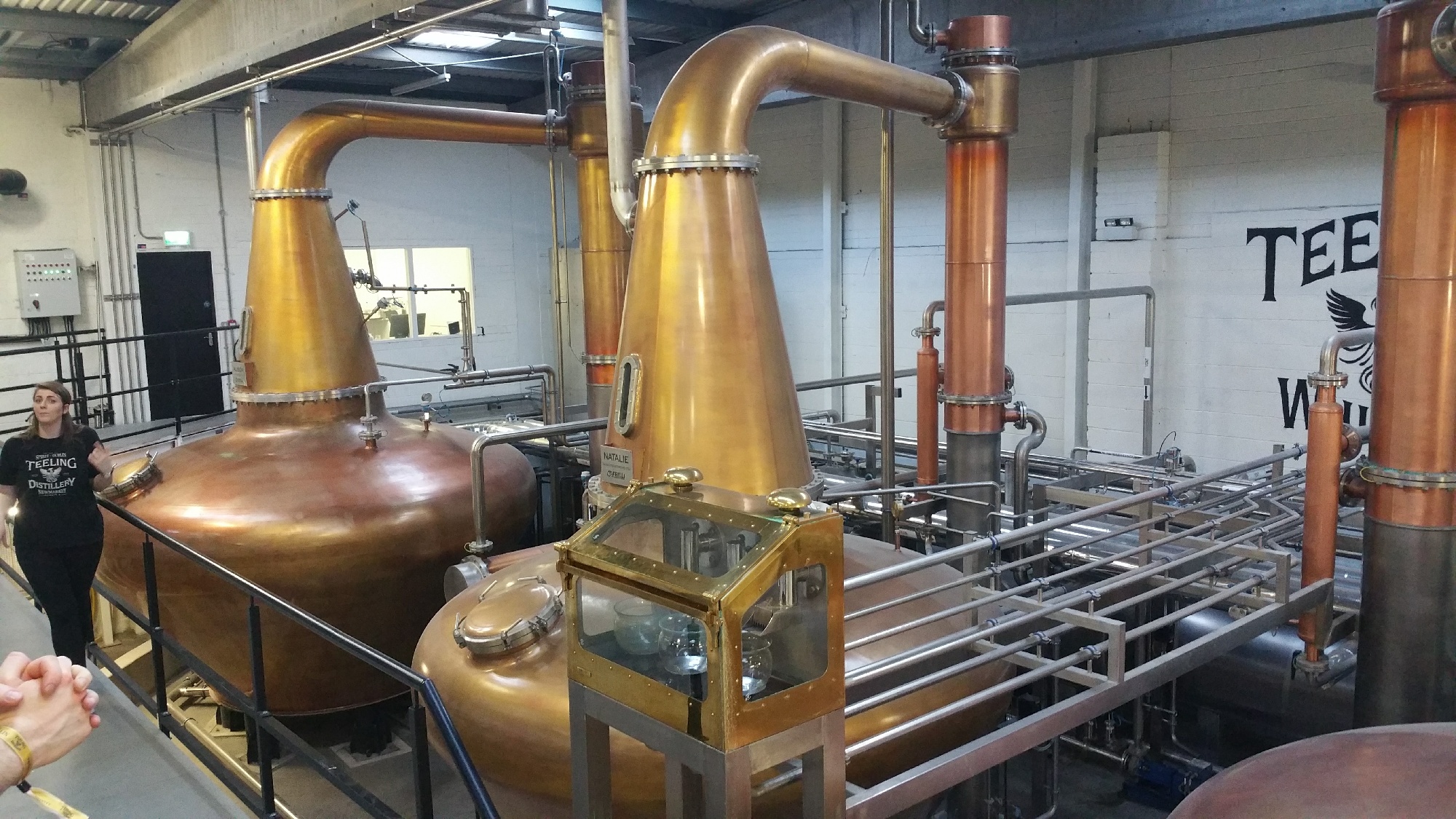
The word 'whiskey' (or whisky) is derived from the Irish (or 'Gaelic') uisce beatha, meaning "the water of life". Irish whiskey was one of the earliest distilled drinks in Europe, arising around the 12th century. It is said that Irish monks invented the elixir we know now as whiskey, and were so fond of it they called it uisce beatha. However, as much as a fairytale and fantasy that sounds, it was probably the Moors who discovered or rediscovered whiskey, we just know that it wasn't the Irish or even the Scots.
The Moors being Muslim, we can only assume they didn't drink alcohol, but their stills were used for medicine rather than recreational purposes, such as distilling alcohol. When the Moors were pushed or driven out of Europe by Catholic armies, the stills and the art of distillation was handed to the monks, who were then able to share this knowledge to all reaches of the globe. The "Water of Life" became universally known and nearly every plant was being tried and tested, in France eau-de-vie, grapes were used, in Scandanavia it was herbs, and in Ireland, it was grain. Whiskey was first mentioned in Irish literature in 1405.

It is hard to trace the evolution of Irish whiskey with little to no documentation and when uisce beatha is mentioned, it was also used to describe the other drink at the time, aqua vitae, the Roman drink made from wine or brandy. The earliest indication of distilled spirit from cereal is actually mentioned in Scotland in 1494, in a letter from the King to Friar John Cor requesting him to make aqua vitae. If grain was being distilled in Scotland in 1494, we can make a well-educated bet that it was also being done in Ireland.
In Ireland, any discussions about uisce beatha or whiskey were mainly done vocally and no written records are found, this is mainly because they didn't want the British to have any trace of their home brewing whiskey. The British rule and their laws didn't mean much beyond the Pale (a large ditch surrounding the English Crown controlled lands around Dublin) so much of the early whiskey distilling happened away from the east coast of Ireland.
An Act was passed in 1556 by the English Parliament which made aqua vitae illegal for anybody to make without a license from the Lord Deputy. However, beyond the Pale, this was laughed at, as the Gaelic chiefs were already too busy at war with each other than to worry about the English.

Irish whiskey and dates have a fond relationship, therefore it's hard to find a bottle of whiskey that doesn't have a date stamp. When John Teeling opened the Cooley Distillery in 1989, the first thing he did was purchase the old Locke's brand in Kilbeggan and stuck the date 1757 on the bottles. Then when his sons Jack and Stephen opened their own distillery in Dublin, they went with 1782, the date their ancestor Walter Teeling opened his distillery on Marrowbone Lane.
Crown law started to push across the island of Ireland in the early 17th Century, where anyone and everyone could distill. Distilling was happening as frequently as knitting, weaving, or butter-making. It was a way to use surplus grain and the fact that whiskey didn't go off, it could be easily stored as used to trade for other products. It was used medicinally, rubbed on wounds to clean and disinfect, or drank to cure ailments, or just to get drunk and transport people away from their miserable surroundings.
On 24th December 1661, the King put a tax on whiskey in Ireland, and this was the start of what we know now as customs and excise, and it came to light due to illegal distilling. And this then formed a split in Irish whiskey, 'parliament whiskey' and illegal poitín. The law was full of loopholes, distillers didn't have to register, and the ones in charge of enforcing the laws were the landlords, but they knew illegal distilling was used to pay the rents, causing an upsurge in corruption and self-interest, along with tax evasion.
The exact date of when Ireland's first distillery fired up their pot stills is open for debate, until 1761, registration was voluntary and it meant paying tax, so there are no prizes for guessing why there is very little record of whiskey making in Ireland. But what we do know is, Matthew McManus opened up in Kilbeggan in 1757, and Peter Roe started distilling in Thomas Street, Dublin. However, who owned the original plants beforehand, we will never know.
In the middle of the 18th Century, the demand for whiskey was booming, however, supplies weren't able to handle, therefore quality control wasn't at the forefront of priorities. In 1759, the standard was so bad, that parliament was forced to pass an Act prohibiting distillers from using any ingredient except malt, grain, potatoes, and sugar.
In 1760, the world was seeing some of the biggest changes since man stopped foraging for food and started farming. There was a population boom, growth in agriculture, and industrial mechanics fuelled rapid change. In 1769, came the invention of the steam engine by Scotsman James Watt, which started the Industrial Revolution and steam would change the world forever.
The Industrial Revolution didn't go much further than Belfast in Ireland, as the rest of the country was ravaged by poverty, large starving families, and many emigrating for work to Liverpool, Manchester, and Glasgow. However, with the industrial revolution around distilling, it meant a larger volume of agricultural products were required such as water, yeast, and grain, which Ireland had in abundance. In 1779, Lord North's London government changed the excise from the volume of spirit to the stills. When the law came into force, there were 1,228 distilleries in Ireland, 1 year later only 246 were registered with the State. You might be wondering where they all went... underground, of course. Parliament whiskey began to disappear and poitín was the drink of the people.
The few distilleries that stayed on the right side of the law were in a battle to survive. To stay afloat they had to recharge their stills more than what was permitted. However, the heat was turned up to distill quicker, but this led to excess frothing, which in turn caused delays and slowed the process down, having the opposite result needed. To stop this froth, soap was added to the mix, yes soap! This solved the frothing issues but the whiskey tasted horrible. A 300 gallon still went through 1 tonne of soap in a 1 month period. 'Parliament Whiskey' soon became known as 'gut rot', while the moonshiners producing poitín could distill at their own pace and therefore creating a superior product.
Taxation and fines came in to deter others from distilling illegally, and therefore a town was fined as a whole £20 if distilling equipment was found. However, this just caused more hardship on the poorest communities and many were often framed by others planting equipment. Many lives were ruined.
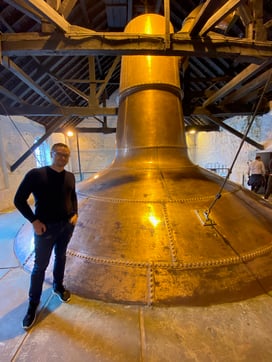
By 1822, there were only 40 registered legal distilleries in Ireland, and the year after, only 20. At the same time, there were at least 800 illegal stills on the Inishowen peninsula alone, according to Aeneas Coffey, an excise officer in Donegal. In 1823, the then government removed the old still tax and implemented that distillers would only pay duty on what they created. Licensed distilleries went from 32 up to 93 in 12 years. In 1823, the largest pot still in Ireland could hold 750 gallons, two years later, Midleton Distillery was boasting the world's largest pot still, with a grand capacity of 31,500 gallons. It had to be assembled on-site, and the building had to be constructed around it, it is that big! (see photo)
At the age of 83, John Jameson put £4,000 into updating the plant in Bow Street, unfortunately, that same year he passed away, but his son of the same name ensured that his father's plans were to go ahead. The Irish Whiskey trade was booming and many were expanding, innovating, adopting new technologies, and conquering the world of whiskey, while most of the country was very poor and turning to alcohol to destress. The Church called upon the Irish people to take a vow of abstinence from the 'demon drink' which nearly instantly caused 20 distilleries to shut overnight as millions took up the pledge.
At this time, the flavour of the spirit was not too important, but the strength and volume were, most of the spirit ended up going to Cork or London to be made into gin. However, as we've seen in very recent times, alcohol has many other uses, such as sanitization, sterilization sweeteners, and in the making of perfumes, to name a few. In 1830, along comes Aeneas Coffey (the former excise officer in Donegal) again, and this time he patented a new type of still that would speed up the distilling process and be the most economical still created, also known as the Coffey, Continous, or The Column Still. His intention was to distill industrial use spirits, however, it wasn't long until these spirits became sold as 'whiskey'.
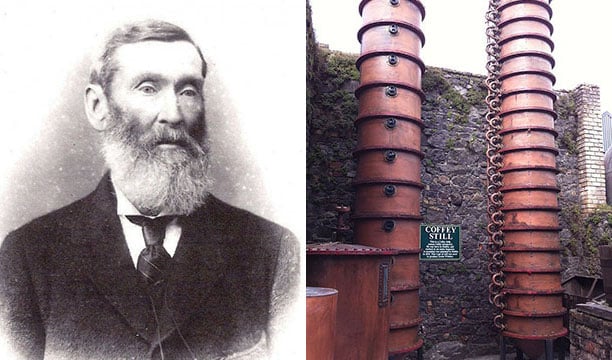
It is misinformation that the Irish shunned the Coffey Still, in fact within the first 10 years there were around 13 stills were in operation in Ireland and only 2 in Scotland. However, what is true is that 'The Big 4' of John Jameson, William Jameson, John Power, and George Roe did snub the Coffey Still, saying that the spirit produced is not a spirit, yet more like a wine or beer and that it's quality was inferior to the quality of a pure pot still whiskey. With the Irish economy starting to put on the brakes and halt, Aeneas left to the more welcoming markets of Scotland and England.
This was a slap in the face for the Irish, even though there was a large initial investment upfront for the Coffey Still and the cost of running it, the Scots were able to produce the same amount in 1 week, then they could in 9 months of a Pot Still. Then the worst tragedy came upon Ireland, the potato blight which would, in turn, be the root cause of the famine. The native crop that the Irish population depended upon for survival was destroyed. A million people died and the country was in ruins.
The Big 4 were to become victims of their own success, with no regulations on trade, fraud, and counterfeit whiskey was running riot! Whiskey made in Scottish pot stills and Liverpool silent stills were being sold in barrels stamped as John Jameson & Sons or JJ&S and labeled as "premium Irish whiskey". Their good names and reputations were in tatters, being dragged through the mud as cheap blends were being sold under their 'brands'. Between 1840 to 1860, the number of distilleries was less than half mainly due to the Coffey stills. However, one other thing that came with new technology was the Irish rail network. It was now easier to transport goods from Midleton, Cork, Galway, and up to Bushmills in the north. The distilleries who had battled through the illegal poitín era, the famine, the Coffey still, fraud and counterfeit, were now hitting it big in the golden spirit years for Irish whiskey.
An insect known as grape phylloxera, or the American grape louse made it's way over to France and wiped out the Cognac vineyards. This was a blessing in disguise for Irish whiskey. By the 1880's it was near impossible to find French brandy, so Irish whiskey capitalised, and any of the distilleries near a port quadrupled in production and exports.
Irish whiskey was dominating the world, and the Scots knew they had to do something to halt this. In 1877, six of Scotland's largest grain distilleries got together to form the Distillers Company Limited. However, with all their advancements in technology and not for lack of effort, Irish distilleries still dominated the market. Even though the Scots started to add unmalted barley to their mash bill to try re-create or shall I say copy the Dublin style whiskey. However, the days of Irish whiskey domination were soon coming to a close...
“Imitation is the sincerest form of flattery that mediocrity can pay to greatness.” ― Oscar Wilde
The great whiskey bubble had to pop at some stage, and boy did it! In 1898, Scottish blenders Pattison's went bust with some splash. Two brothers, Robert and Walter Pattison had 3 brands, 2 Scotch and 1 Irish blend. However, they had been fraudulently trading for years, buying up their own stock to pump up the value, and having everything funded on credit. When they did eventually fold, they owed a sum to the tune of £500,000, a substantial sum at the time. Their bankruptcy hit the whiskey industry as prices floored.
The 20th century then brought with it a recession and the Great War. As distilleries shut their doors and turned off their stills, the Big 4 worked harder than ever to keep their distilleries running, even with heavy taxation, a recession, and more competition. Everyone expected the war to end at Christmas 1914, however, it only got worse. But in 1916, there was an agreement made about whiskey, that it could no longer be sold straight from the still, it had to be matured at least 3 years and sold at a minimum abv strength. This worked in favour of the pot still whiskey creators as the Coffey Still operators were not already maturing their whiskey.
Counterfeit and fraud were still an ongoing battle, and Jameson was still a premium brand, therefore other bottlers tried to replicate their label. Jameson had to resort to watermarking and numbering their labels to curb this. However, some pub landlords were still topping up their bottles with cheaper, lesser quality whiskey. Whiskey merchants such as Mitchell's of Belfast were one of the first to adopt 'branding',
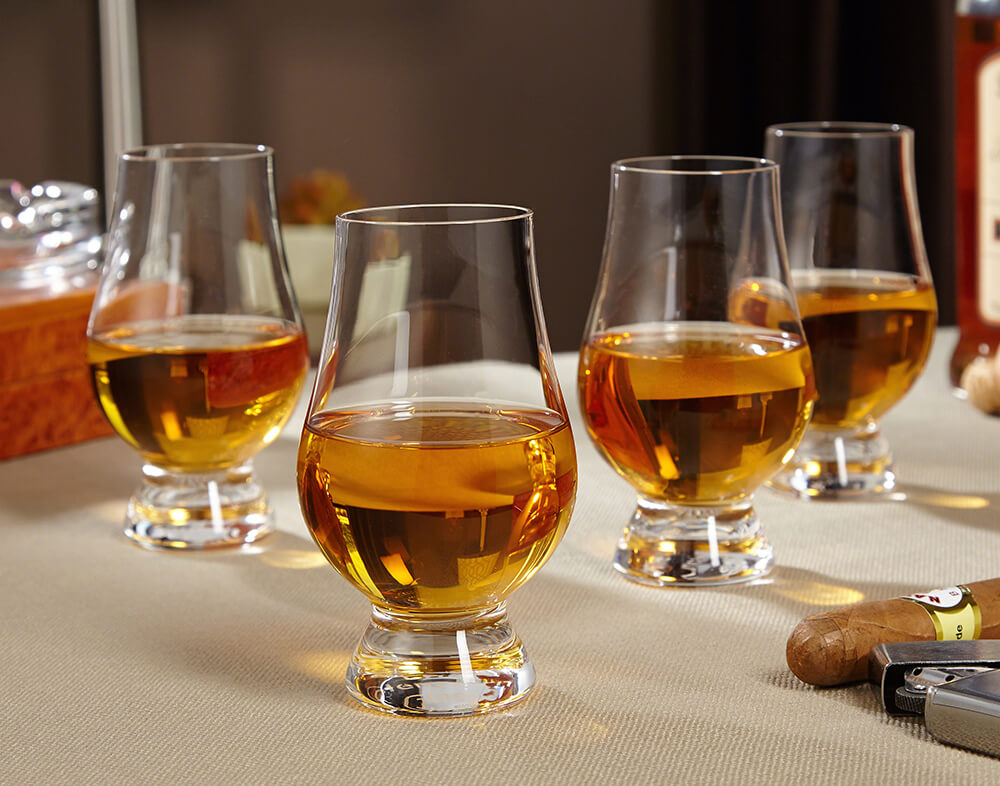
I attended my first ever online Whiskey tasting with the Pot Still in August 2020 as a way to relieve some Lockdown boredom. I enjoyed it so much I have attended every monthly tasting since!
At the start, I was a total whiskey novice and although I still have a long way to go, I have learned a lot about the different types of whiskey and their respective distilling processes. I have even started my own whiskey collection.
The whiskey tastings are a great blend of fun and information. Craig the host not only has an expansive knowledge of everything whiskey but he also creates a fun atmosphere full of interaction between all participants with many of us staying online after tasting for another few drinks and a chat. Highly recommended for a fun way to escape the lockdown blues. (Also must be noted that the sample sizes are very generous 😜)
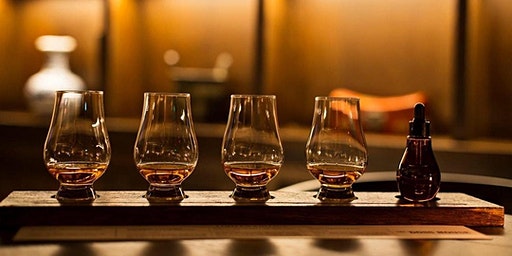
.png?width=75&name=potstill-e1500501269525%20(1).png)
The Pot Still, your source for tasting notes, reviews, and ratings of Irish, Bourbons, Scotches and Whiskeys of the world. The Pot Still was created to follow the explosion of energy, innovation, and to track the rise of the new whiskey lifestyle, especially the Revival of the Irish Whiskey Industry.